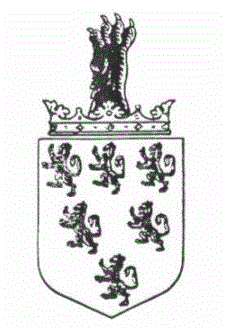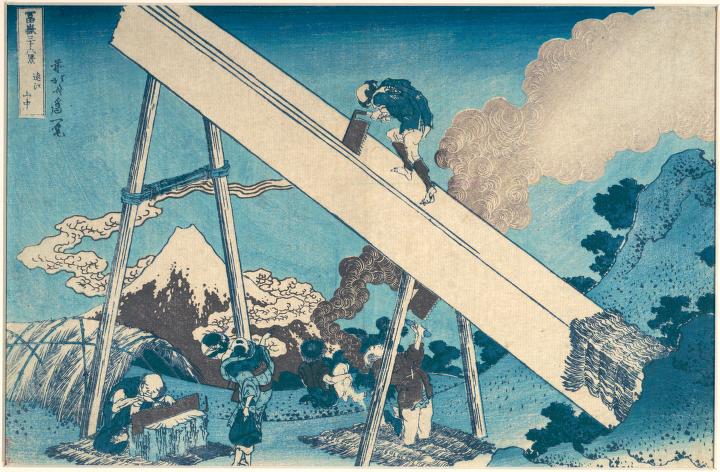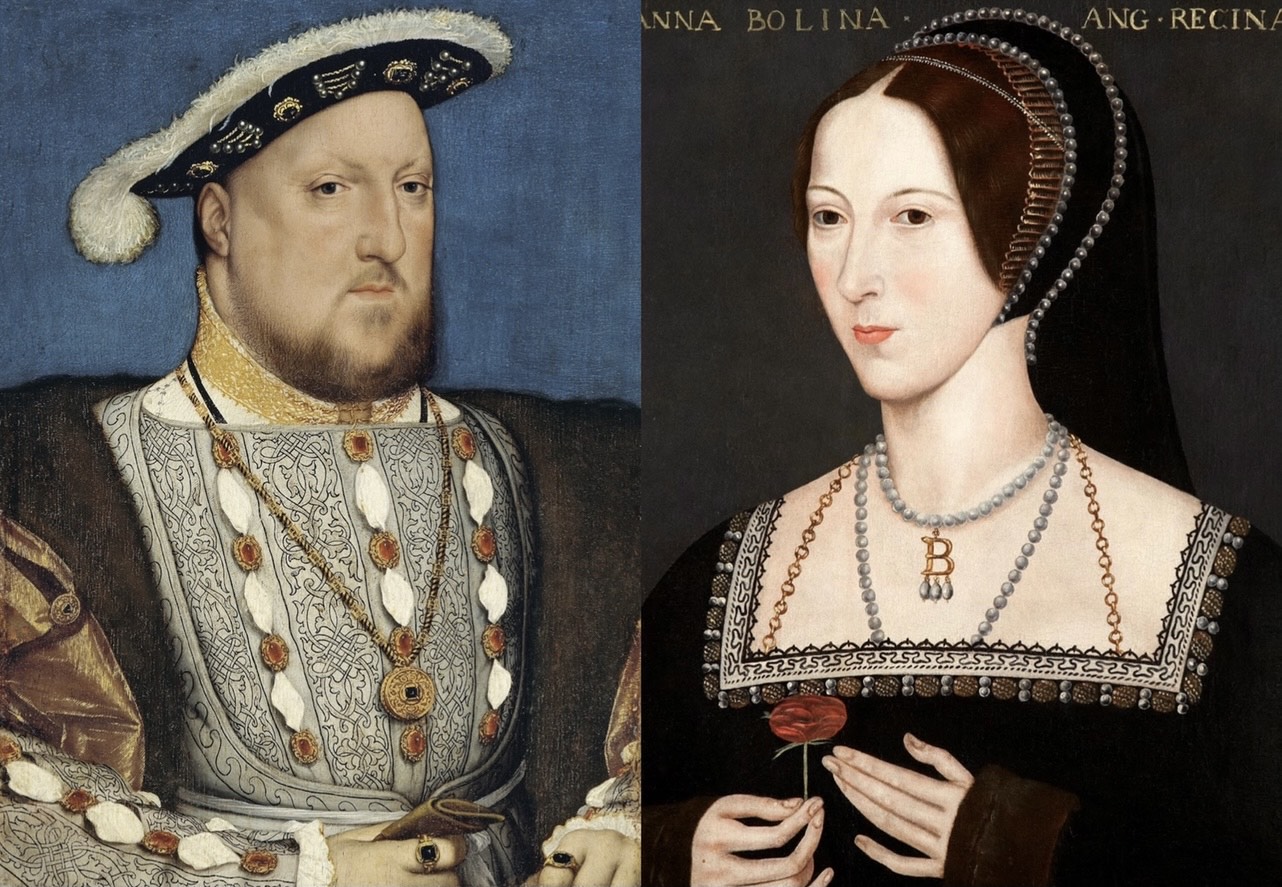|
Edmund Bonner
Edmund Bonner (also Boner; c. 15005 September 1569) was Bishop of London from 1539 to 1549 and again from 1553 to 1559. Initially an instrumental figure in the schism of Henry VIII from Rome, he was antagonised by the Protestant reforms introduced by the Duke of Somerset and reconciled himself to Catholicism. He became notorious as "Bloody Bonner" for his role in the persecution of heretics under the Catholic government of Mary I of England, and ended his life as a prisoner under Queen Elizabeth I. Early life Bonner was the son of Elizabeth Frodsham, who was married to Edmund Bonner, a sawyer of Hanley, Worcestershire. John Strype printed an account, with many circumstantial details, stating that Bonner was the natural son of George Savage (and therefore grandson of Sir John Savage and great-nephew of Thomas Savage who had also served as Bishop of London, before he became Archbishop of York), rector of Davenham, Cheshire, and that his mother married Bonner only after th ... [...More Info...] [...Related Items...] OR: [Wikipedia] [Google] [Baidu] |
The Right Reverend
The Right Reverend (abbreviated as The Rt Revd or The Rt Rev) is an honorific style (form of address), style given to certain (primarily Western Christian, Western) Christian ministers and members of clergy. It is a variant of the more common style "The Reverend". Usage * In the Anglican Communion and the Roman Catholicism in the United Kingdom, Catholic Church in Great Britain, it applies to bishops, except that ''The Most Reverend'' is used for archbishops (elsewhere, all Roman Catholic Church, Catholic bishops are styled as ''The Most Reverend''). * In some churches with a Presbyterian heritage, it applies to the current Moderator of the General Assembly, such as ** the current Moderator of the United Church of Canada (if the moderator is an ordained minister; laypeople may be elected moderator, but are not styled Right Reverend) ** the current Moderator of the Presbyterian Church in Ireland ** the current Moderator of the General Assembly of the Church of Scotland ** the cur ... [...More Info...] [...Related Items...] OR: [Wikipedia] [Google] [Baidu] |
Schism (religion)
A schism ( , , or, less commonly, ) is a division between people, usually belonging to an organization, movement, or religious denomination. The word is most frequently applied to a split in what had previously been a single religious body, such as the Great East–West Schism or the Western Schism. It is also used of a split within a non-religious organization or movement or, more broadly, of a separation between two or more people, be it brothers, friends, lovers, etc. A schismatic is a person who creates or incites schism in an organization or who is a member of a splinter group. Schismatic as an adjective means pertaining to a schism or schisms, or to those ideas, policies, etc. that are thought to lead towards or promote schism. In religion, the charge of schism is distinguished from that of heresy, since the offence of schism concerns not differences of belief or doctrine but promotion of, or the state of division, especially among groups with differing pastoral jurisdi ... [...More Info...] [...Related Items...] OR: [Wikipedia] [Google] [Baidu] |
Archbishop Of York
The archbishop of York is a senior bishop in the Church of England, second only to the archbishop of Canterbury. The archbishop is the diocesan bishop of the Diocese of York and the metropolitan bishop of the province of York, which covers the northern regions of England (north of the river Trent, Trent) as well as the Isle of Man. The archbishop's throne (''cathedra'') is in York Minster in central York, and the official residence is Bishopthorpe Palace in the village of Bishopthorpe outside York. The current archbishop is Stephen Cottrell, since the confirmation of bishops, confirmation of his election on 9 July 2020. History Roman There was a bishop in Eboracum (Roman Britain, Roman York) from very early times; during the Middle Ages, it was thought to have been one of the dioceses established by the legendary Kings of Britain, legendary Lucius of Britain, King Lucius. Bishops of York are known to have been present at the councils of Council of Arles, Arles (Eborius) ... [...More Info...] [...Related Items...] OR: [Wikipedia] [Google] [Baidu] |
Thomas Savage (bishop)
Thomas Savage (1449 in Rocksavage, Clifton, Cheshire – 3 September 1507, in Cawood Castle, Cawood, Yorkshire) was a prelate, diplomat and scholar during the Tudor period. Savage served as Clerk of the Closet, Chaplain to Henry VII of England, King Henry VII and was Archbishop of York from 1501 until his death in 1507. Prior to his consecration as a Bishop, Savage served as a diplomat and rector (Savage continued to carry out diplomatic duties whilst he was a Bishop). As a diplomat Savage held the positions of English Ambassador to Castile and Portugal, during which time he helped broker the marriage treaty between Arthur, Prince of Wales and Catherine of Aragon in 1489, and later held the position of English Ambassador to France from 1490, where he took part in the conference at Boulogne. Family and studies Born a member of the Savage family, Thomas was the second son of the many children of Sir John Savage (1422–1495) and Lady Catherine ''née'' Audley-Stanley family, Sta ... [...More Info...] [...Related Items...] OR: [Wikipedia] [Google] [Baidu] |
John Savage (soldier)
Sir John Savage, Knight of the Order of the Garter, KG, Knight of the Order of the Bath, KB, Privy Council of England, PC (1444–1492), was an English knight of the Savage family, who was a noted military commander of the late 15th-century. Savage most notably fought at the Battle of Bosworth Field in 1485, where he commanded the left flank of the Henry VII of England, Tudor (House of Lancaster, Lancastrian) army to victory and is said to have personally slain the John Howard, 1st Duke of Norfolk, Duke of Norfolk in single combat. Earlier in the Wars of the Roses, Savage had been a supporter and friend of the House of York, Yorkist King Edward IV of England, Edward IV, fighting alongside him and helping him to victories at the Battle of Barnet in April 1471 and the Battle of Tewkesbury the following month. He returned to active military service in 1482 when he joined the English invasion of Scotland (1482), invasion of Scotland led by the King's brother Richard III of England, R ... [...More Info...] [...Related Items...] OR: [Wikipedia] [Google] [Baidu] |
John Strype
John Strype (1 November 1643 – 11 December 1737) was an English clergyman, historian and biographer from London. He became a merchant when settling in Petticoat Lane Market, Petticoat Lane. In his twenties, he became perpetual curate of Theydon Bois, Essex and later became curate of Leyton; this allowed him direct correspondence with several highly notable ecclesiastical figures of his time. He wrote extensively in his later years. Life Born in Houndsditch, London, he was the son of John Strype (or van Stryp) and cousin to sailor and writer Robert Knox (sailor), Robert Knox. A member of a Huguenot family who, in order to escape religious persecution within Duchy of Brabant, Brabant, had settled in East London. Located in what has now become known as Strype Street in Petticoat Lane, he was a merchant and Silk throwing, silk throwster. The younger John was educated at St Paul's School (London), St Paul's School, and on 5 July 1662 entered Jesus College, Cambridge; he went on from ... [...More Info...] [...Related Items...] OR: [Wikipedia] [Google] [Baidu] |
Sawyer (occupation)
Sawyer also known as sawmill worker is an occupational term referring to someone who saws wood, particularly using a pitsaw either in a saw pit or with the log on trestles above ground or operates a sawmill. One such job is the occupation of someone who cuts lumber to length for the consumer market, a task now often done by end users or at lumber and home improvement stores. By Miranda Marquit, Main Street, thestreet.com, May 3, 2010. The term is still widely used in the industry to refer to the operator of a (or still in some ... [...More Info...] [...Related Items...] OR: [Wikipedia] [Google] [Baidu] |
Elizabeth I Of England
Elizabeth I (7 September 153324 March 1603) was Queen of England and Ireland from 17 November 1558 until her death in 1603. She was the last and longest reigning monarch of the House of Tudor. Her eventful reign, and its effect on history and culture, gave name to the Elizabethan era. Elizabeth was the only surviving child of Henry VIII and his second wife, Anne Boleyn. When Elizabeth was two years old, her parents' marriage was annulled, her mother was executed, and Elizabeth was declared illegitimate. Henry restored her to the line of succession when she was 10. After Henry's death in 1547, Elizabeth's younger half-brother Edward VI ruled until his own death in 1553, bequeathing the crown to a Protestant cousin, Lady Jane Grey, and ignoring the claims of his two half-sisters, Mary and Elizabeth, despite statutes to the contrary. Edward's will was quickly set aside and the Catholic Mary became queen, deposing Jane. During Mary's reign, Elizabeth was imprisoned fo ... [...More Info...] [...Related Items...] OR: [Wikipedia] [Google] [Baidu] |
Mary I Of England
Mary I (18 February 1516 – 17 November 1558), also known as Mary Tudor, was Queen of England and Ireland from July 1553 and Queen of Spain as the wife of King Philip II from January 1556 until her death in 1558. She made vigorous attempts to reverse the English Reformation, which had begun during the reign of her father, King Henry VIII. Her attempt to restore to the Church the property confiscated in the previous two reigns was largely thwarted by Parliament but, during her five-year reign, more than 280 religious dissenters were burned at the stake in what became known as the Marian persecutions, leading later commentators to label her "Bloody Mary". Mary was the only surviving child of Henry VIII by his first wife, Catherine of Aragon. She was declared illegitimate and barred from the line of succession following the annulment of her parents' marriage in 1533, but was restored via the Third Succession Act 1543. Her younger half-brother, Edward VI, succeede ... [...More Info...] [...Related Items...] OR: [Wikipedia] [Google] [Baidu] |
Heresy
Heresy is any belief or theory that is strongly at variance with established beliefs or customs, particularly the accepted beliefs or religious law of a religious organization. A heretic is a proponent of heresy. Heresy in Heresy in Christianity, Christianity, Heresy in Judaism, Judaism, and Bid‘ah, Islam has at times been met with censure ranging from excommunication to the death penalty. Heresy is distinct from apostasy, which is the explicit renunciation of one's religion, principles or cause; and from blasphemy, which is an impious utterance or action concerning God or sacred things. Heresiology is the study of heresy. Etymology Derived from Ancient Greek ''haíresis'' (), the English ''heresy'' originally meant "choice" or "thing chosen". However, it came to mean the "party, or school, of a man's choice", and also referred to that process whereby a young person would examine various philosophies to determine how to live. The word ''heresy'' is usually used within a C ... [...More Info...] [...Related Items...] OR: [Wikipedia] [Google] [Baidu] |
Catholicism
The Catholic Church (), also known as the Roman Catholic Church, is the List of Christian denominations by number of members, largest Christian church, with 1.27 to 1.41 billion baptized Catholics Catholic Church by country, worldwide as of 2025. It is among the world's oldest and largest international institutions and has played a prominent role in the history and development of Western civilization.Gerald O'Collins, O'Collins, p. v (preface). The church consists of 24 Catholic particular churches and liturgical rites#Churches, ''sui iuris'' (autonomous) churches, including the Latin Church and 23 Eastern Catholic Churches, which comprise almost 3,500 dioceses and Eparchy, eparchies List of Catholic dioceses (structured view), around the world, each overseen by one or more Bishops in the Catholic Church, bishops. The pope, who is the bishop of Rome, is the Papal supremacy, chief pastor of the church. The core beliefs of Catholicism are found in the Nicene Creed. The ... [...More Info...] [...Related Items...] OR: [Wikipedia] [Google] [Baidu] |
Edward Seymour, 1st Duke Of Somerset
Edward Seymour, 1st Duke of Somerset, 1st Earl of Hertford, 1st Viscount Beauchamp (150022 January 1552) was an English nobleman and politician who served as Lord Protector of England from 1547 to 1549 during the minority of his nephew King Edward VI. He was the eldest surviving brother of Queen Jane Seymour, the third wife of King Henry VIII and mother of King Edward VI. Seymour grew rapidly in favour with Henry VIII following Jane's marriage to the king in 1536, and was subsequently made Earl of Hertford. On Henry's death in 1547, he was appointed protector by the Regency Council on the accession of the nine-year-old Edward VI. Rewarded with the title Duke of Somerset, Seymour became the effective ruler of England. Somerset continued Henry's military campaign against the Scots and achieved a sound victory at the Battle of Pinkie, but ultimately he was unable to maintain his position in Scotland. Domestically, Somerset pursued further reforms as an extension of the Engli ... [...More Info...] [...Related Items...] OR: [Wikipedia] [Google] [Baidu] |








